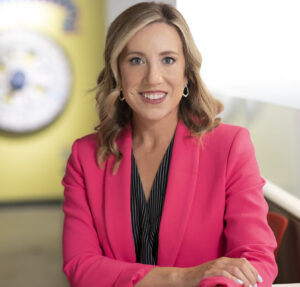What we’ve learned about communications from the 2020 election
With professional pollsters missing the mark for the second presidential election in a row, should all communicators start to question what it is they think they know?

Here are some lessons communicators should take from the recent election cycle:
1. Polls are only as good as people who answer them.
For the second time in four years the media and their pollsters are once again wringing their hands trying to figure out what went wrong. As anyone who has ever done any surveys at all, the truth is that you have to get a large enough representative sample and a large enough sample size of any particular cohort before you start drawing sweeping conclusions, never mind redrawing the political map of the United States.
The reality is that this year, even more so than 2016, people were less likely to answer phone calls from unknown numbers. Think about it. People are using their phones today less and less as a communication device and more as a way to shop, bank, track their kids, check their health and figure out if they’re getting enough exercise. Why would you want to stop all that productive activity for a call from a number you don’t recognize?
Secondly, for the past four or five years, there’s been a steady drum beat from the president and his followers not to trust the “Lame Stream Media.” If you are part of the 40% of the country that watches Fox News or follows President Trump, and you get a phone call from someone saying “I’m from the New York Times (or NPR, CNN, etc.) and I’d like to ask you a few questions,” chances are good you will hang up.
As a result, the actual pool of people who responded to polls was smaller, and while statisticians account for that through their models, the old saying is still true: “Garbage in, garbage out.”
Compounding the problem is that people who are engaged in politics and keep up on the news are far more likely to answer a poll, and they tend to fall into the “highly-educated” demographic, not the “without a degree” demographic. No matter how much you adjust for education, pollsters still started with a much smaller pool of Trump voters.
Now we’ve all been there. You put out a survey, send a bunch of reminders, and still only end up with 100 responses. So, you make do with what you have, ignore the data that isn’t statistically valid and draw what conclusions you can. Perhaps you resend the survey or put lots of caveats around the analysis—which is fine, unless you are planning the election of the next leader of the free world.
The real problem with bad polling is that we’ve become far too addicted to it. Yes, I too, like many of my friends, spent much of the week before the election refreshing www.fivethirtyeight.com, just to reduce my anxiety. It didn’t work.
I doubt that Americans, never mind PR people, will ever have the patience to ignore the polls and just live with not knowing, but it’s probably preferable to believing something we know is unreliable.
The better solution, of course, is for researchers to figure out how to get the opinions of those who aren’t picking up the phone. Implanted sensors into the amygdala? Hacking into home security cameras to find out what they’re reading and talking about? Mall-intercept surveys (assuming malls will still exist by 2022)? Seems like a good area for artificial intelligence and the technology gurus to explore.
2. Money can’t buy you love—or votes—but relationships work really well.
Early estimates are that some $14 billion will have been spent by campaigns in the 2020 elections—a staggering amount of money. (Try not to think about what else it might have been spent on: the climate, schools, nutrition, health and/or housing for those in need.)
Was it worth it? Some of it was. The credo in campaigns is that “early money screams, and late money whispers,” In other words, money that comes into a campaign early enables campaigns to be innovative and try new things, find new voters, experiment with different forms of persuasion. Money that comes in late in the game—think of the flood of donations after the death of Ruth Bader Ginsberg—only helps to repeat and reinforce what the campaign has already done. And the worst part is that they have no idea whether anything works. Without actual votes, the only metrics either come from the polls (see No. 1) or from less valid metrics like social engagement that doesn’t really reflect the intent of the voter.
There’s a big lesson for us in all of that. When you are on a tight budget and need to carefully target your communications, you can be more innovative, think differently and very likely have great impact. When you throw money at a “general public” it lands on deaf ears.
What we’ve heard from the campaigns is that grass roots organizing, house parties and other ways local people bring local messages to a neighborhood works. PR people have known that for years, and never gotten the credit they deserve. Instead, marketers like to spend big bucks on splashy things and claim attribution when it’s not there.
The problem for 2020 Democrats was they decided to observe CDC guidelines and eschewed door knocking and in-person gatherings and the Republicans didn’t. Which is why in some cases, even though Biden won the state, down-ballot Democrats lost big.
What that tells us is that when you have a well-coordinated effort that includes paid, earned and owned efforts focused on building relationships – you get measurable results.
3. Quantity does not equal quality.
“Quality” media coverage does not derive from the circulation of a media outlet or even the credibility of the media outlet. It includes a combination of the right message reaching the right audience at the right time. Throwing millions at TV audiences in the last two weeks of a campaign has little effect, if your target audience is getting all his/her information from Reddit, TikTok or podcasts.
In order to succeed you need to listen to your target audience, figure out what messages resonate, and then put money behind the right messages, targeted at the right audience, via their most credible sources. The Wall Street Journal has great reach and credibility, but if your audience is 18-year-old girls, it’s not going to have much impact. Instead, you should define quality as not just the influence of the media outlet, but also whether the story contains your key messages, desired quotes, desirable photo and reaches the right audience.
4. Be who you are, and see who is pleased.
Another lesson is something my therapist told me many times: “Stop trying to please everyone, just be who you are and see who is pleased.” Donald Trump and Joe Biden never wavered from their very real and authentic personas. The people that voted for either one was pleased enough by the persona of their chosen candidate to vote for him to be president. The winner clearly pleased more people than the other guy.
One of the most powerful lessons PR people can learn from these COVID times is that we are all human. The top political correspondent for NPR, Mara Liasson, is frequently interrupted by her dog on national radio. Children come into top level meetings demanding macaroni and cheese. Only a psychopath would not empathize with pros working through these occasional hiccups in one’s professional life. So, the number one lesson for 2020 is that empathy and authenticity is the order of the day. It’s what you need to build trust, attract top talent, and grow your customer base.
5. If Joe Biden can win the U.S. presidency with virtual events, you can win virtually too.
Granted, there’s no substitute for knocking on individual doors, but not all things virtual failed in the 2020 election. Biden took a lot of grief for doing conference calls and outreach from his basement in Delaware, but it didn’t stop him from winning.
This week a leading health journalist, Michelle Forzley, advised a group of marketers (of which I was one) not to plan on in-person events until spring of 2022 at the earliest. As she walked us through all the details of vaccine release, distribution and actually getting people to take it, it was clear that no one is going to be comfortable going to large in-person gatherings in the next year or so. Rethink your event, figure out new ways to build relationships, get leads or get your messages across. It’s the time to rethink and reinvent, not just try to replicate the real world on Zoom.
Katie Delahaye Paine is the CEO of Paine Publishing LLC and publisher of The Measurement Advisor. Find her on Twitter @queenofmetrics.







Thanks for the terrific insight! We can always count on you to help make sense of a situation.